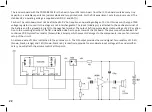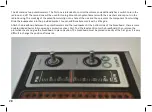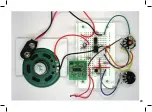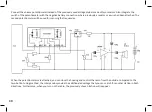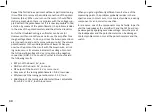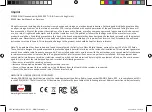
Imprint
© 2020 EIGHT Innovation Ltd, MK43 0XT U.K. & Franzis Verlag GmbH,
85540 Haar bei Muenchen, Germany
All rights reserved, including photo-mechanic reproduction and storage on electronic media devices. Authoring and distributing copies either
on paper, storage media or on the internet, as well as PDF, is only permitted with explicit permission of the publisher and failing to do so will
face prosecution. Most of the product descriptions, of hardware and software, as well as company names and logos named in this document
are, as a rule, all registered trademarks and should be treated as such. The publisher follows the spellings used by the manufacturer in the
product descriptions. Everything presented in this book, circuits and programmes has been designed, checked and reviewed with the greatest
possible care. Nevertheless, mistakes in the book and software cannot be ruled out. This product conforms to the CE standard, the enclosed
instructions must be followed. This information belongs to the product and should be kept for future reference.
Note: This equipment has been tested and found to comply with the limits for a Class B digital device, pursuant to part 15 of the FCC Rules.
These limits are designed to provide reasonable protection against harmful interference in a residential installation. This equipment generates,
uses and can radiate radio frequency energy and, if not installed and used in accordance with the instructions, may cause harmful interference
to radio communications. However, there is no guarantee that interference will not occur in a particular installation. If this equipment does
cause harmful interference to radio or television reception, which can be determined by turning the equipment off and on, the user is encour-
aged to try to correct the interference by one or more of the following measures:
—Reorient or relocate the receiving antenna.
—Increase the separation between the equipment and receiver.
—Connect the equipment into an outlet on a circuit different from that to which the receiver is connected.
—Consult the dealer or an experienced radio/TV technician for help.
SIMPLIFIED EU DECLARATION OF CONFORMITY
Hereby, FRANZIS Verlag GmbH declares that the radio equipment type Retro Radio, type number FRANZIS_Radio_002, is in compliance with Di-
rective 2014/53/EU. The full text of the EU declaration of conformity is available at the following internet address: www.franzis.de/conformity
www.eight-innovation.com
NEU 10130 Retro-Radio EN - V2 - EIGHT 2020.indd 36
NEU 10130 Retro-Radio EN - V2 - EIGHT 2020.indd 36
21.12.2020 15:38:34
21.12.2020 15:38:34
Summary of Contents for RETRO RADIO
Page 1: ......
Page 14: ...14...
Page 15: ...Step 2 Sound Generator Required components 10 k resistor brown black orange 15...
Page 17: ...17...
Page 20: ...20...
Page 24: ...Step 5 Tuning Required components Hook up wire 24...
Page 29: ...29...
Page 35: ...Measured voltages 35...

